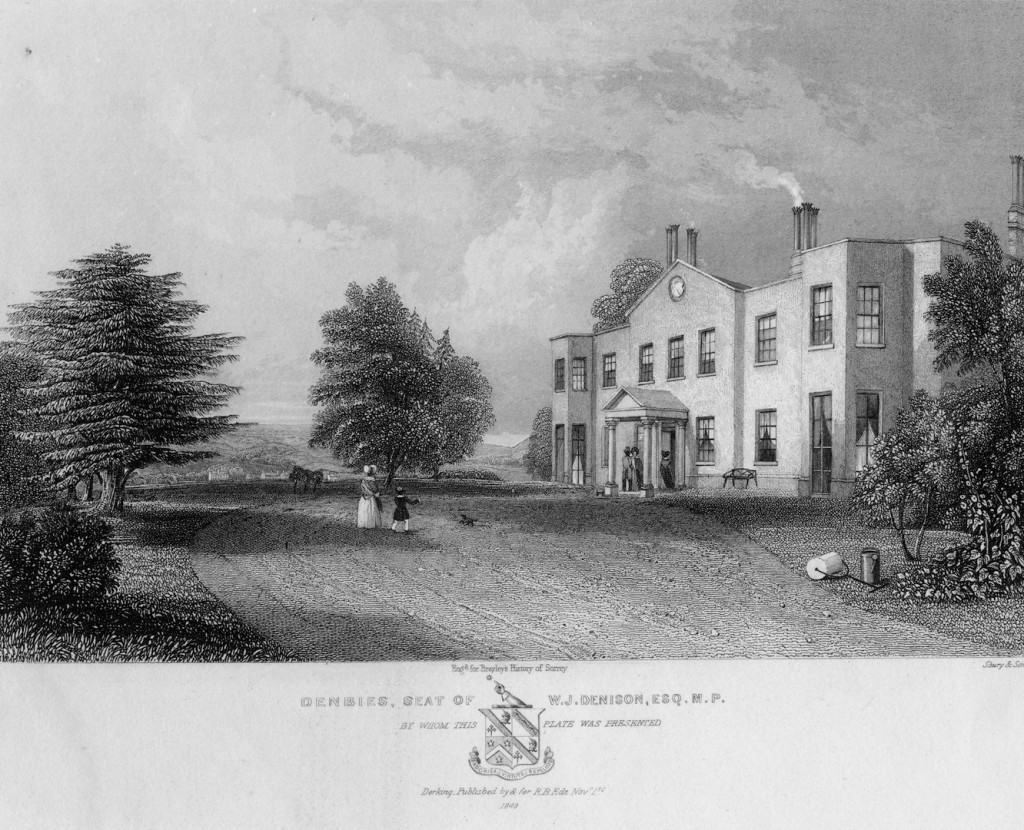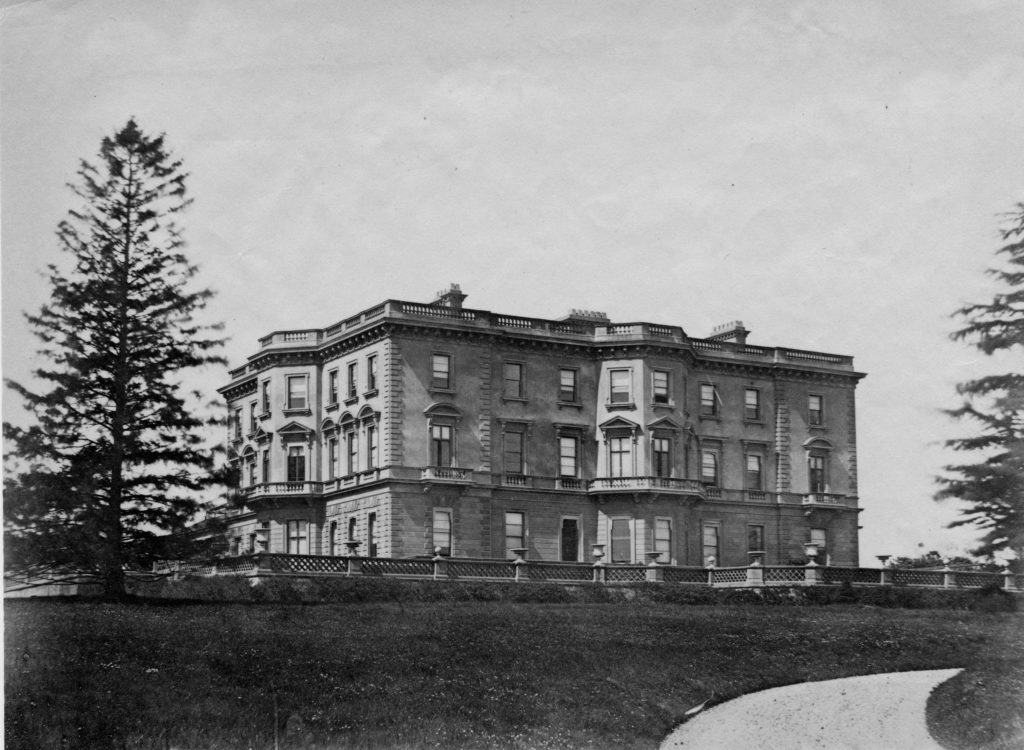
To the north-east of Dorking overlooking the slopes of Box Hill, Denbies estate was created by Jonathan Tyers, the wealthy proprietor of Vauxhall Pleasure Gardens. He bought Denbies farm in 1734 and created a country seat for himself there. Tyers laid out the grounds at Denbies with a temple and a clock which struck minutes rather than hours, skulls marking out pathways and solemn figures reminding the living of the inevitability of death.

In 1850 Thomas Cubitt, whose family originated from Buxton in Norfolk, bought the 3,900 acre estate from Lord Londesborough.
During the first half of the 19th Century, Thomas Cubitt was perhaps the most important builder in London, and of notable country houses. In London, he was the creator of Belgravia and parts of Bloomsbury, and was chosen to carry out extensions to Buckingham Palace. Among his many notable country projects were the east wing of Queen Victoria’s Osborne House on the Isle of Wight which he built together with Prince Albert, and Polesden Lacey quite close to Denbies.
It was perhaps during the building of Polesden Lacey that he became familiar with the beautiful North Downs countryside of Surrey which even in those days, had convenient access to London. In 1850, Denbies was a moderate sized, Georgian house in a superb position, on the summit of a hill, with views across Mickleham, Box Hill, the town of Dorking, and beyond to the South Downs.
Two decades later, Cubitt bought the 3,900 acre Denbies estate. Seeking to rival the Deepdene, Cubitt constructed a grand mansion with almost 100 rooms to replace the original house. The Victorian mansion was very similar to Osborne House, a huge brick and stucco structure with Italianate detail. Cubitt employed W. A. Nesfield, the landscape architect who had laid out St. James’ Park and Buckingham Palace forecourt, to advise him. He planted numerous young conifers of many varieties as well as hardwoods such as Oak, Beech, Chestnut and Lime to cover the bare chalk of his estate. Prince Albert came to visit Denbies in July 1851, and himself planted a number of rare conifers and further advised Cubitt on the landscaping of the Park.
The similarity between Osborne and Denbies was such that many people believed the house was designed for the Prince of Wales. However, this was incorrect and Cubitt himself denied it.

Cubitt had little time to enjoy his retreat: in 1855 he died, leaving a fortune of over £1 million. Queen Victoria said of Cubitt that ‘a better, kinder-hearted man never breathed’. A statue of Cubitt, who always insisted on being called a builder and not an architect, stands outside the Dorking Halls.

© Dorking Museum (K1294)
Denbies passed to the Cubitt’s eldest son George who was created first Baron Ashcombe in 1892 and he commissioned George Gilbert Scott to build the nearby Church of St. Barnabas on Ranmore Common which is today a well known Surrey landmark. George, developed the estate, which employed some 400 people. Cubitt had his own railway siding at Dorking for the delivery of construction materials. He used the Ranmore chalk pits on the estate for the lime mortar.
Land which was close to the railway station began to be sold for housing in the 1920s. More land near the town centre was developed in the 1930s.

Used as the Home Guard headquarters during the Second World War, the mansion was demolished in 1953, and 800 acres were then passed to the National Trust. The third Lord Ashcombe converted a Regency building some way from the original house into a 8 bedroomed house.

The estate employed several hundred in its farms, grounds and quarries and had its own school, fire-brigade and church – St Barnabas at Ranmore.
In the 1980s the remainder was sold to the water-treatment firm, Biwater. The company’s chairman, Adrian White, has since developed the Estate’s south facing slopes into a vineyard with 268 acres having been planted.
The vineyard is open for tastings and guided tours. For more details visit the Denbies website.
Last : The Deepdene
Next : Pippbrook

